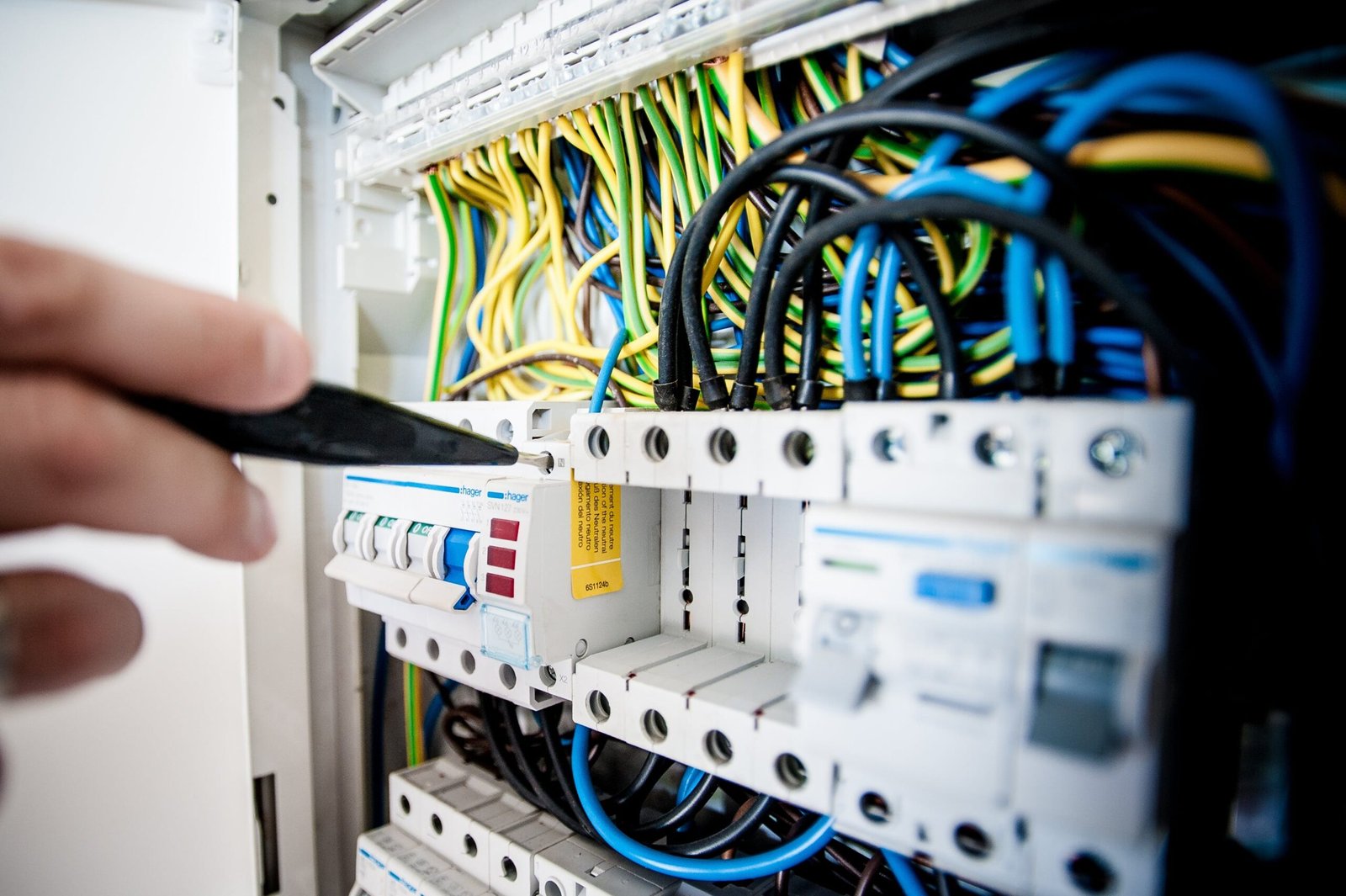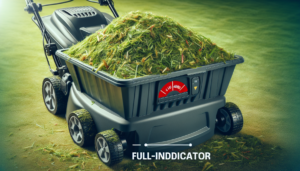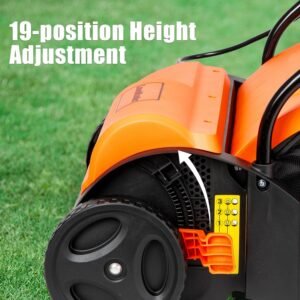
Maintaining a well-groomed lawn is no easy feat, but with the right tools, it can become a breeze. One fundamental aspect of lawn care is ensuring that your gas lawn mower’s blades are consistently sharp. This article will guide you through the importance of regular blade sharpening and provide valuable insights into how often you should commit to this essential task. So, get ready to elevate your mowing game and keep your grass looking pristine with the expert advice we have in store for you.

Importance of Sharpening Lawn Mower Blades
Ensuring Efficient Lawn Cutting
Keeping your lawn mower blades sharp is essential for maintaining an efficient cutting performance. Dull blades can result in an uneven cut, leaving behind patches of tall and short grass. This can not only ruin the appearance of your lawn but also make it more susceptible to pests and diseases. By regularly sharpening your blades, you can ensure a consistent and clean cut, giving your lawn a professional and well-maintained look.
Promoting a Healthy Lawn
When lawn mower blades are dull, they tear the grass rather than cut it cleanly. This can lead to ragged and torn grass blades, which are more vulnerable to moisture loss and disease. Additionally, torn and jagged edges provide an entry point for pests and pathogens. By regularly sharpening your blades, you help to maintain the health of your lawn by ensuring clean cuts that promote healthy growth.
Preventing Damage to the Lawn Mower
Dull blades not only affect the appearance and health of your lawn but can also put unnecessary strain on your lawn mower’s engine. When blades are dull, the motor has to work harder to cut through the grass, leading to increased vibrations and a decrease in fuel efficiency. By keeping your blades sharp, you not only protect the integrity of your lawn but also the longevity and performance of your lawn mower.
Factors Affecting Blade Sharpness
Frequency and Intensity of Use
The more frequently and intensely you use your lawn mower, the faster the blades will become dull. If you have a large yard or regularly encounter thick or overgrown grass, you may need to sharpen your blades more often. On the other hand, if you have a smaller yard and mow it infrequently, you may be able to go longer between sharpenings.
Type and Condition of Lawn
The type and condition of your lawn can also affect how quickly your blades become dull. If you have a lawn with dense and robust grass, the blades may wear out faster compared to a lawn with thinner and less resilient grass. Additionally, if your lawn has rocks, roots, or debris, the blades can become damaged or dulled more quickly.
Blade Material
The material of the lawn mower blades can also affect their sharpness. Blades made of harder materials, such as carbon steel or stainless steel, tend to stay sharper for longer compared to blades made of softer materials. However, harder blades may be more prone to chipping or breaking if they encounter hard objects while mowing.

Signs it’s Time to Sharpen the Blades
Uneven Grass Cutting
If you notice that your lawn is not being cut evenly, with patches of taller and shorter grass, it is a clear indication that your blades need sharpening. Dull blades will struggle to provide a clean and level cut, resulting in an uneven lawn surface.
Ragged or Torn Grass Blades
Take a closer look at your grass blades. Are they torn, ragged, or frayed? If so, it’s time to sharpen your blades. When blades are dull, they tend to tear the grass instead of cutting it cleanly. Torn grass blades are not only unsightly but also more susceptible to diseases and pests.
Increased Mower Vibrations
Excessive vibrations while operating your lawn mower can indicate dull blades. When blades become dull, the mower’s engine has to work harder, causing vibrations. If you notice a significant increase in vibrations, it’s a good idea to check and sharpen your blades.
Recommended Sharpening Frequency
Manufacturer Recommendations
To determine the optimal sharpening frequency for your lawn mower blades, consult the manufacturer’s recommendations. They will provide specific guidelines based on the type and model of your mower.
Hours of Use
As a general rule of thumb, it is recommended to sharpen your blades after every 25 hours of use. Keep track of how long you mow your lawn and calculate when it’s time for a sharpening session. This can help you maintain the performance and longevity of your blades.
Seasonal or Yearly Interval
If you don’t use your lawn mower frequently or if you have a small yard, you can opt for a seasonal or yearly interval for sharpening your blades. Sharpening your blades at the beginning or end of each mowing season can ensure they are in top shape when you need them.

Procedure for Sharpening Lawn Mower Blades
Safety Precautions
Before sharpening your lawn mower blades, it is important to take necessary safety precautions. Disconnect the spark plug wire to prevent accidental start-up and potential injuries. Wear protective gloves and eyewear to shield yourself from any debris. Additionally, make sure to work on a stable surface to prevent the mower from tipping over.
Removing the Blades
Start by flipping your lawn mower over to expose the blades. Use a block of wood or a blade removal tool to prevent the blade from rotating while you loosen the nut or bolt holding it in place. Carefully remove the blade and inspect it for any damage or wear. If the blade is damaged beyond repair, consider replacing it.
Using a Sharpening Tool
There are various sharpening tools available for lawn mower blades, including files, bench grinders, and specialized blade sharpeners. Select a method that suits your skills and tools. When sharpening, maintain a consistent angle and stroke along the cutting edge of the blade. Take care to file or grind away any nicks or deformities while preserving the original blade shape. Once sharpened, wipe away any metal shavings and make sure the blade is clean before reinstalling.
Alternative Options: Professional Sharpening
Benefits of Professional Sharpening
If you are not confident in your sharpening skills or prefer to leave the task to the experts, professional blade sharpening is a convenient option. Professionals have the experience and specialized equipment to ensure an accurate sharpening that maintains the integrity of the blade. This can result in a better cutting performance and prolong the life of the blade.
Cost and Convenience Considerations
While professional sharpening offers many benefits, it is important to consider the cost and convenience. Professional services can vary in price, and you may need to factor in the transportation time and costs. Additionally, depending on your location, finding a reliable and reputable service provider could be challenging. It is worth weighing the cost and convenience against your own skills and availability.
Preventive Maintenance Tips
Regular Cleaning and Inspection
In addition to sharpening your blades, regular cleaning and inspection are critical for maintaining a well-functioning lawn mower. After each use, remove any grass clippings and debris from the blades and underside of the mower. Inspect the blades for any signs of damage, and address them promptly to prevent further issues.
Proper Blade Balancing
Balancing your blades is an often-overlooked aspect of blade maintenance. Imbalanced blades can cause excessive vibration, leading to premature wear on the mower and reduced cutting performance. Use a blade balancer to ensure that the blades are evenly weighted before reinstalling them.
Storage and Handling Tips
Proper storage and handling can also contribute to the longevity of your lawn mower blades. Store the mower in a dry and protected area to prevent rust and corrosion. When handling the blades, use caution to avoid dropping or bending them, as that can affect their balance and effectiveness.
After-Sharpening Blade Care
Reinstalling and Securing the Blades
Once you have sharpened your blades, carefully reinstall them onto the lawn mower. Ensure that they are positioned correctly and securely fastened with the appropriate nut or bolt. Double-check that the blades are tightened to the manufacturer’s specifications to prevent any safety hazards or damage.
Test Run and Adjustments
Before using your lawn mower, conduct a short test run to ensure that the blades are functioning properly. Listen for any unusual sounds or vibrations that could indicate issues with the blades or mower. If necessary, make any adjustments to the blade alignment or contact a professional for further diagnosis.
Ongoing Blade Maintenance
Sharpening your blades is not a one-time fix. As you continue to use your lawn mower, the blades will naturally dull over time. To maintain optimal cutting performance, regularly inspect the blades for any signs of dullness or damage. By addressing any issues promptly, you can extend the lifespan of your blades and ensure a consistently well-groomed lawn.
Troubleshooting Blade Performance Issues
Revisiting Blade Sharpness
If you notice a decline in cutting performance, the first thing to check is the sharpness of your blades. Even with regular sharpening, blades can wear out or become dull. Re-sharpening may be necessary to restore their cutting efficiency.
Checking Blade Fasteners and Alignment
Blade fasteners and alignment can also affect the performance of your mower. Over time, vibrations, bumps, and general use can loosen the blade fasteners. Regularly check and tighten the nuts or bolts to ensure that the blades are securely attached. Additionally, inspect for any signs of misalignment and make any necessary adjustments.
Potential Mechanical Problems
If your blades are sharp, securely fastened, and properly aligned, but you are still experiencing performance issues, there may be underlying mechanical problems with your lawn mower. In such cases, it is advisable to consult a professional to diagnose and address any issues that may be affecting the performance of the mower.
Conclusion
Regularly sharpening your lawn mower blades is not just a matter of aesthetics but also crucial for maintaining a healthy lawn and optimizing the performance of your mower. By understanding the factors affecting blade sharpness and recognizing the signs that indicate it’s time to sharpen, you can ensure a consistently well-groomed lawn. Whether you choose to sharpen the blades yourself or opt for professional services, prioritize preventive maintenance and ongoing care to extend the lifespan and effectiveness of your lawn mower blades. With sharp blades, you’ll enjoy a beautifully manicured lawn that enhances the overall appearance of your outdoor space.






